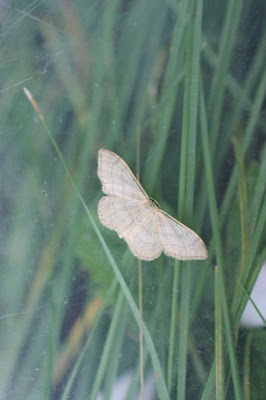1 July 2019
1 July 2019 – National Garden Scheme Moths
 |
| (Pseudargyrotoza cowagana)
|
Not a name to forget. Certainly a very long name for a very small moth. What secrets can be unlocked by finding the derivation of the scientific name? ‘Pseudos’ is the Greek for ‘a falsehood’ and the ‘argurotoxos’ refers to Apollo – the bearer of the silver bow. He also had a golden bow with which he overcame the serpent Pthon. If this moth is observed with a raking light, tiny silver scales can be seen on the forewings. This moth had not been photographed before but was recorded by Dave Chesmore (moth expert and enthusiast) on one of his first visits to Shandy Hall – before this blog-posting ritual was born. There were four of these little moths all showing the distinctive circular splodge of yellow on their backs.’Conwagana’ is a tip-of-the-hat to Conway, an 18th century entomologist who was a good friend to Fabricius, the most distinguished student of Linnaeus. Quite a lot of myth and scholarship for one moth to carry.
 |
| Codling Moth (Cydia pomonella) |
I was pleased to quickly identify a moth I had seen only once before – the Codling Moth.A full description of its identity can be seen here. The little dots of tarnished gold make its identity certain.
 |
| Riband Wave (Idaea aversata) |
The number of moths caught in the moth trap on the night of 28 June was a little more promising than the previous five weeks or so. Many of the traps set earlier in the year have been empty – completely empty – and this is cause for concern. Just over 50 people turned up to visit the gardens in the early evening (the best time) and there was a sufficient variety of moth species to provide interest.
The Riband Wave (Idaea aversata) arrived in plenty displaying a smattering of spots on its fawny wings and also the characteristic ‘kink’ in the third band on the edge of the wing. It is a very common and very delicate moth that just needs a quick observation and then released before it damages itself against the perspex.Mount Ida pertains to where the Greek gods and godesses observed the Trojan Wars and the ‘aversata’ part of the scientific name comes from ‘aversus’ – belonging to the under part. Linnaeus wrote ‘punctum in pagina inferiore magis saturatum’ – the spot more deeply coloured on the underside of the ‘page’, the ‘page’ meaning the surface of the wing. A very bookish moth.
 |
| Small Angle Shades (Euplexia lucipara) |
The Small Angle Shades always looks as if it has just come back from a good scrub and polish and then has been neatly folded. Its scientific name refers to the plaiting and weaving that the moth’s resting position displays (can you see the ‘fold’ in the photograph?) and the second part (lucipara) refers to the ‘light brought forth’ as a golden mark beneath the black/purple colouring.The larva feeds on foxglove, nettle, ferns and sallows in particular.
This week will bring a trap on Thursday and (hopefully) a sufficient number of moths to show to primary school children …
Recent Moths
- 25 July 2023 – Collective Noun for Hawkmoths
- MOTH LIST to August 2023 with links
- 28 July 2023 – TRIPLE New Species Alert!
- 18 July 2023 – A Golden…Plusia!
- 13 July 2023 – Arts and Sciences
- 10 July 2023 – Rise of the Yellow Underwings
- 4 July 2023 – Cold-weather Catch
- 4 July 2023 – Mother of Pearl, an Inspiration to Science
- 28 June 2023 – Buff-tipped Marble
- 23 June 2023 – Moth or Butterfly?
- 20 June 2023 – Bee, Straw, Emerald and a Ghost
- 17 June 2023 – Old and New






